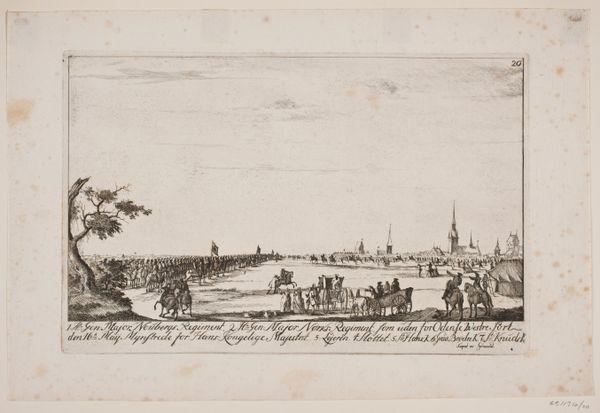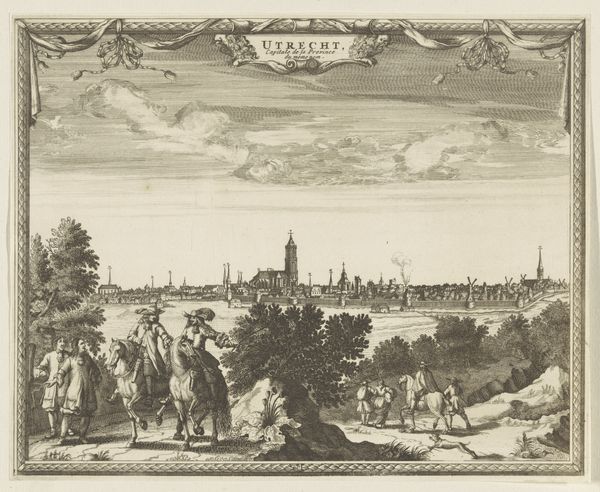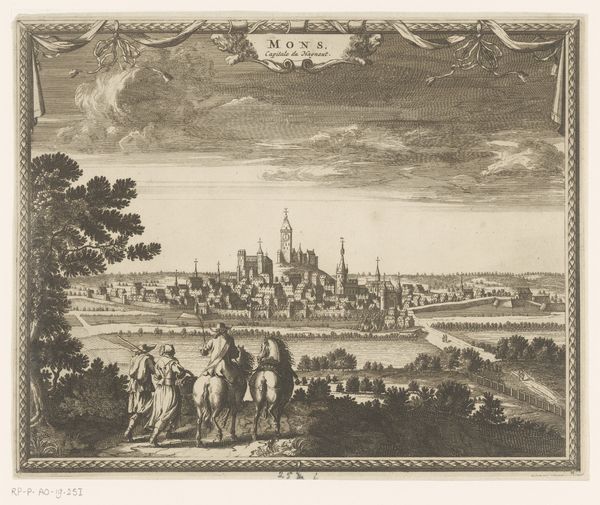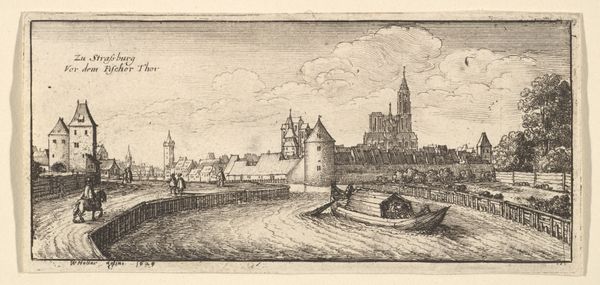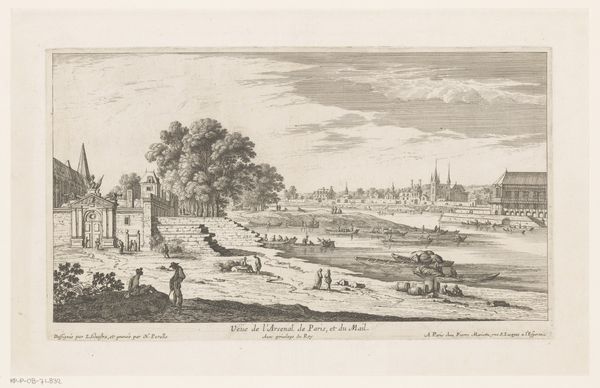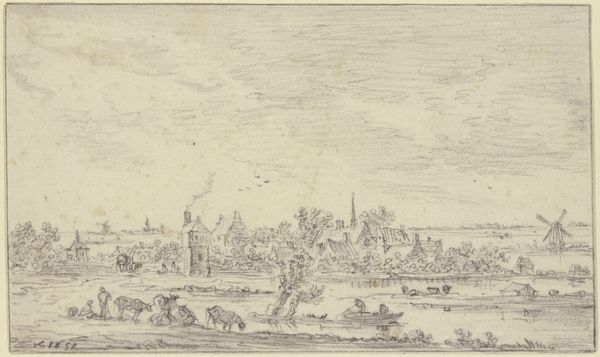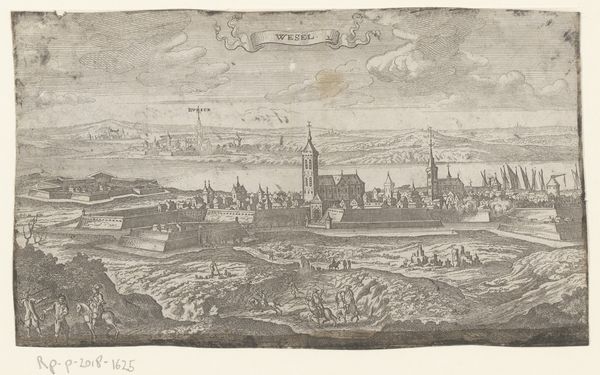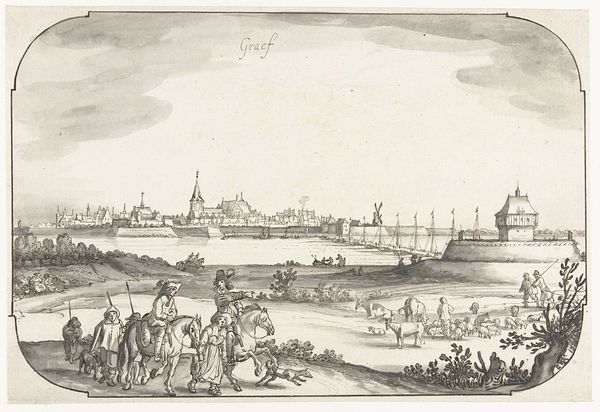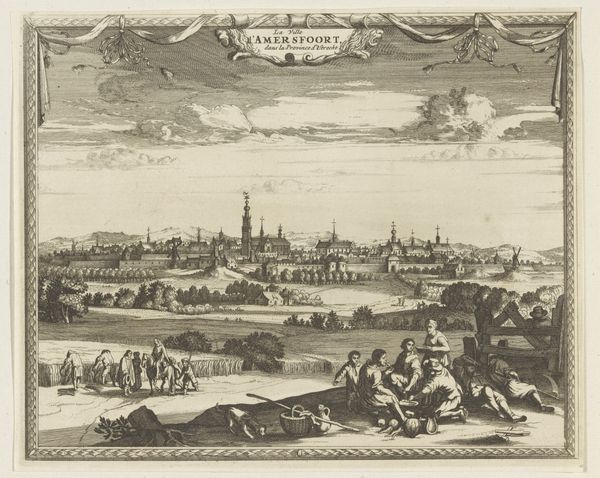
drawing, print, etching
#
drawing
#
baroque
# print
#
etching
#
landscape
#
cityscape
Dimensions: 146 mm (height) x 290 mm (width) (bladmaal)
Gillis Neyts made this print of Lille in the 17th century, using the intaglio technique. This involved incising lines into a copper plate, inking the surface, then wiping it clean so that ink only remained in the recesses. The plate was then pressed against paper, leaving a delicate transfer. Look closely, and you can see the characteristic crispness of the etched lines. Neyts varied their weight to create atmospheric perspective, with the buildings of Lille receding into the distance. The social context of this print is interesting. While appearing to be simply a depiction of a city, prints like these were often made for a growing merchant class, keen to have images of the places they traded with. The act of printing itself – repeating an image many times over – mirrors the logic of early capitalism. What was once the domain of unique artworks could now be reproduced, disseminated and consumed. The artistry, of course, lies in the hand skills of the printmaker. Appreciating this reminds us that all works of art are made through a combination of concept and craft.
Comments
No comments
Be the first to comment and join the conversation on the ultimate creative platform.
